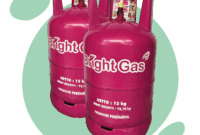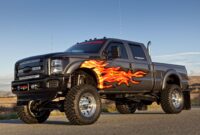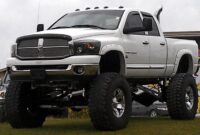The Backbone of Modern Logging: Understanding Log Trucks with Integrated Loaders cars.truckstrend.com
In the rugged world of timber harvesting, efficiency, safety, and self-sufficiency are paramount. Gone are the days when loggers relied solely on separate pieces of heavy machinery for every step of the process. Enter the log truck with loader, a revolutionary piece of equipment that has fundamentally transformed the timber industry. This integrated powerhouse combines the raw hauling power of a heavy-duty truck with the precision and reach of a hydraulic crane, allowing operators to load logs directly onto their vehicle, often without the need for additional equipment or personnel. These self-loading log trucks are not just vehicles; they are mobile, multi-functional hubs that significantly streamline operations, reduce costs, and enhance safety in even the most remote forest environments.
This comprehensive guide will delve into the intricacies of log trucks with loaders, exploring their anatomy, the myriad benefits they offer, various configurations, operational considerations, common challenges, and practical advice for anyone looking to understand or invest in these indispensable machines.
The Backbone of Modern Logging: Understanding Log Trucks with Integrated Loaders
The Integrated Powerhouse: Anatomy of a Log Truck with Loader
At its core, a log truck with loader is a marvel of engineering, designed to withstand the rigors of forest operations while performing precision tasks. Understanding its key components is essential to appreciating its capabilities:
- Heavy-Duty Chassis: The foundation is a robust truck chassis, typically featuring multiple axles (tandem, tri-axle, or even quad-axle) to distribute the immense weight of logs and the loader itself. These are built for durability, often with reinforced frames and suspensions to handle rough terrain and heavy loads.
- Loader Crane (Grapple Loader): This is the heart of the "loader" aspect. A powerful hydraulic boom arm, often mounted directly behind the truck’s cab or at the rear, extends and retracts to reach felled logs. The crane’s reach and lifting capacity vary significantly based on the model and intended use.
- Grapple: Attached to the end of the loader crane, the grapple is a specialized claw-like attachment designed to securely grasp and manipulate logs. Different grapple types exist, including continuous rotation grapples for precise positioning and sorting grapples for handling multiple smaller logs.
- Bunks and Stakes: These are the structural supports on the truck bed that cradle and contain the logs during transport. They are designed for strength and often include adjustable stakes to accommodate varying log lengths and volumes.
- Hydraulic System: The circulatory system of the loader, comprising pumps, valves, hoses, and cylinders that convert engine power into the precise movements of the crane and grapple. A robust hydraulic system is crucial for smooth, powerful, and reliable operation.
- Outriggers/Stabilizers: Essential for safe operation, these extendable legs are deployed during loading to provide a stable, wide base, preventing the truck from tipping under the weight of the logs and the extended boom.
- Operator Station: Often an elevated cab or a control panel with excellent visibility, providing the operator with a commanding view of the loading area and precise controls for both the truck and the loader.

Unpacking the Benefits: Why Integrated Loaders Are Indispensable
The integration of a loader into a log truck offers a multitude of advantages that have made these machines a cornerstone of modern logging:

- Unparalleled Efficiency: The primary benefit is the dramatic increase in operational efficiency. A single operator can both transport and load logs, eliminating the need for separate loading equipment (like excavators or front-end loaders) and their operators. This streamlines the entire process from felling to delivery.
- Significant Cost Savings: By reducing the number of machines and personnel required on site, log trucks with loaders lead to substantial savings in labor, fuel consumption (less idle time for multiple machines), and maintenance costs associated with fewer assets.
- Enhanced Safety: Integrating the loading function reduces the number of people and machines interacting in the logging area. The operator is typically in a protected cab, minimizing exposure to potential hazards such as falling logs or moving equipment, thereby improving overall site safety.
- Increased Versatility & Accessibility: These self-loading units are incredibly versatile. They can operate effectively in smaller landing zones, roadside logging operations, and challenging terrain where bringing in separate, larger loading equipment might be impractical or impossible. They are ideal for thinning operations or clearing individual trees.
- Faster Turnaround Times: With the ability to load quickly and independently, log trucks with loaders significantly reduce the time spent at the loading site, allowing for more trips per day and optimizing logistics.
- Improved Load Control: Operators can precisely stack and balance loads, ensuring optimal weight distribution for safer transport, compliance with weight limits, and maximum payload efficiency.

Types, Configurations, and Customization
Log trucks with loaders come in various types and configurations, designed to meet diverse operational needs and log sizes:
- Loader Placement:
- Rear-mounted: The loader is positioned at the very back of the truck or on a dedicated logging trailer. This is common for hauling longer logs and allows the loader to reach logs from the ground and load onto both the truck and a "pup" trailer if used.
- Mid-mounted (behind cab): The loader is situated directly behind the truck’s cab. This configuration can offer better weight distribution over the truck’s axles and is often preferred for shorter logs or operations where overall length is a concern.
- Loader Specifications:
- Reach: Varies from approximately 25 feet for smaller units to over 40 feet for heavy-duty models, dictating how far the loader can reach logs from the truck.
- Lifting Capacity: This is crucial and depends on the loader’s size and design, ranging from a few tons at full extension for light-duty work to 10-15 tons or more for large-scale operations.
- Truck Chassis:
- On-Highway: Optimized for road travel, these trucks might have lighter components and suspensions suitable for paved and well-maintained gravel roads.
- Off-Highway/Off-Road: Built for the most challenging forest roads and uneven terrain, these chassis feature heavier-duty axles, reinforced frames, higher ground clearance, and robust suspensions.
- Grapple Types: Beyond standard grapples, specialized options include continuous rotation grapples (for infinite positioning), sorting grapples (for precise selection), and larger capacity grapples for handling multiple small logs.
- Axle Configurations: Depending on regional weight laws and the desired payload, trucks can be configured with various axle setups, from simple tandem drives to tri-axle or even quad-axle designs.
Operating and Maintaining Your Workhorse
Operating a log truck with loader requires a unique blend of driving skill and crane proficiency. Proper operation and diligent maintenance are key to maximizing the lifespan and efficiency of these valuable assets.
- Operator Proficiency: Operating a log truck with loader demands specialized training beyond a standard commercial driver’s license (CDL). Operators must be adept at both driving heavy vehicles, often in challenging off-road conditions, and precise hydraulic crane operation. Training typically covers load securement techniques, hydraulic system knowledge, and rigorous safety protocols specific to logging environments.
- Pre-Operation Checks: Daily inspections are non-negotiable. This includes checking hydraulic fluid levels and potential leaks, assessing the structural integrity of the boom, grapple, and chassis, verifying tire pressure, inspecting brakes, and ensuring all lights and safety features are functional.
- Loading Techniques:
- Site Selection: Always choose stable, level ground for loading. Be acutely aware of overhead obstructions like power lines or tree branches.
- Stabilizer Deployment: Properly deploying and leveling the outriggers is critical for stability and preventing tip-overs during lifting operations.
- Load Balancing: Even weight distribution is paramount for safe transport and compliance with legal weight limits. Logs must be stacked securely and tied down meticulously to prevent shifting during transit.
- Routine Maintenance: Adhering to the manufacturer’s recommended maintenance schedule is vital. This includes regular hydraulic fluid and filter changes, lubrication of all moving parts, boom and structural inspections for cracks or wear, and general engine and chassis maintenance. Neglecting maintenance can lead to costly breakdowns and significant downtime.
- Regulatory Compliance: Operators and companies must strictly adhere to all local, state, and federal regulations regarding vehicle weight limits, load securement (e.g., DOT regulations in the United States), and operator certification requirements.
Navigating Challenges and Finding Solutions
While incredibly beneficial, log trucks with loaders do present certain challenges that require strategic solutions:
- High Initial Investment: These specialized machines represent a significant capital expenditure.
- Solution: Explore various financing options, consider investing in well-maintained used equipment from reputable dealers, or investigate leasing agreements to manage upfront costs.
- Complex Maintenance: The integration of hydraulic systems and heavy machinery means maintenance can be more complex and requires specialized knowledge and tools.
- Solution: Invest in skilled, certified mechanics, ensure access to genuine OEM parts, and implement a robust preventative maintenance program to catch issues before they escalate.
- Weight Penalty: The loader itself adds substantial weight to the truck, which can reduce the legal payload capacity.
- Solution: Optimize truck specifications by choosing lighter materials where possible (e.g., aluminum components), selecting loader models with a high strength-to-weight ratio, and thoroughly understanding regional weight laws to maximize legal payload.
- Operator Skill Gap: There can be a shortage of highly trained and experienced operators capable of efficiently and safely handling these complex machines.
- Solution: Invest in comprehensive operator training programs, offer competitive wages and benefits to attract and retain talent, and consider equipment with ergonomic designs and advanced controls to reduce operator fatigue.
- Adverse Weather Conditions: Operating in rain, snow, or mud can significantly impact traction, stability, and visibility.
- Solution: Equip trucks with appropriate tires (e.g., chains for snow/ice), ensure operators are trained for adverse conditions, and implement strict safety protocols for reduced visibility.
Price Table: Log Trucks with Loaders
The cost of a log truck with loader can vary dramatically based on numerous factors, including age, condition, manufacturer, loader specifications, engine type, and additional features. The table below provides a general estimated price range for illustrative purposes.
| Type of Log Truck with Loader | Condition | Estimated Price Range (USD) | Key Factors Affecting Price |
|---|---|---|---|
| Basic/Older Models | Used | $50,000 – $150,000 | Age, mileage, engine hours, loader condition, major repairs needed, brand reputation. |
| Mid-Range/Well-Maintained | Used | $150,000 – $300,000 | Newer model year, lower hours/mileage, good service history, modern loader features, chassis condition. |
| Standard New Models | New | $300,000 – $450,000 | Manufacturer, standard loader capacity/reach, engine size, basic cabin features, warranty. |
| High-End/Specialized New | New | $450,000 – $700,000+ | Premium brand, heavy-duty loader, extended reach, advanced hydraulics, sophisticated controls, custom chassis, ergonomic cabin, specific certifications. |
Disclaimer: These prices are highly variable estimates and should be used for general guidance only. Actual costs will depend on specific configurations, market conditions, geographic location, and negotiation. Always consult with authorized dealers for accurate and up-to-date pricing.
Frequently Asked Questions (FAQ) About Log Trucks with Loaders
Q1: What is the average lifespan of a log truck with loader?
A1: With rigorous maintenance, a log truck chassis can often last 15-20 years or more, potentially accumulating over a million miles. The integrated loader component typically has a lifespan of 10-15 years, though major hydraulic and structural components can be rebuilt or replaced to extend its life.
Q2: What kind of training is required to operate one?
A2: Operators typically need a commercial driver’s license (CDL) with relevant endorsements (e.g., air brakes). Crucially, specialized training in hydraulic crane operation, load securement techniques, and safety protocols for logging environments is also required. This training is often provided by vocational schools, equipment manufacturers, or experienced logging companies.
Q3: How much weight can they typically lift?
A3: The lifting capacity varies significantly depending on the specific loader model and its reach. Smaller loaders might lift 3-5 tons (6,000-10,000 lbs) at full extension, while larger, heavy-duty models can lift 10-15 tons (20,000-30,000 lbs) or more, especially closer to the truck’s chassis.
Q4: Are they fuel-efficient?
A4: While modern engines are designed for better fuel economy, log trucks with loaders are heavy-duty machines operating in demanding conditions. Their fuel efficiency is generally lower than standard highway trucks due to the added weight of the loader, the power demands of the hydraulic system, and the challenges of off-road travel. Newer models, however, are continuously improving in this regard.
Q5: What are the main safety considerations when operating?
A5: Key safety considerations include ensuring the truck is on stable, level ground with outriggers fully deployed, never exceeding the crane’s lifting capacity, maintaining a clear line of sight, being aware of overhead power lines and ground hazards, and meticulously securing the log load before transport. Regular equipment inspections and avoiding operator fatigue are also critical.
Q6: Can I add a loader to an existing log truck?
A6: Yes, it is technically possible to retrofit a loader onto an existing log truck chassis. However, this is a complex and significant undertaking. It requires ensuring the existing chassis is structurally sound enough to handle the added weight and stress, installing a complete hydraulic system, and performing precise weight distribution analysis. This type of modification should only be performed by qualified and experienced professionals to ensure safety and functionality.
Conclusion
The log truck with loader stands as a testament to innovation in the forestry industry. By combining the capabilities of transport and loading into a single, highly efficient unit, it has revolutionized how timber is moved from the forest to the mill. These versatile machines offer unparalleled benefits in terms of efficiency, cost savings, and safety, making them an indispensable tool for modern logging operations, particularly in remote or challenging terrains.
As technology continues to advance, we can expect to see further refinements in these workhorses, with potential developments in automation, hybrid power systems, and even greater ergonomic designs. Regardless of future innovations, the fundamental concept of the self-loading log truck will remain at the heart of efficient and sustainable timber harvesting, continuing to serve as the literal backbone of the logging industry.



